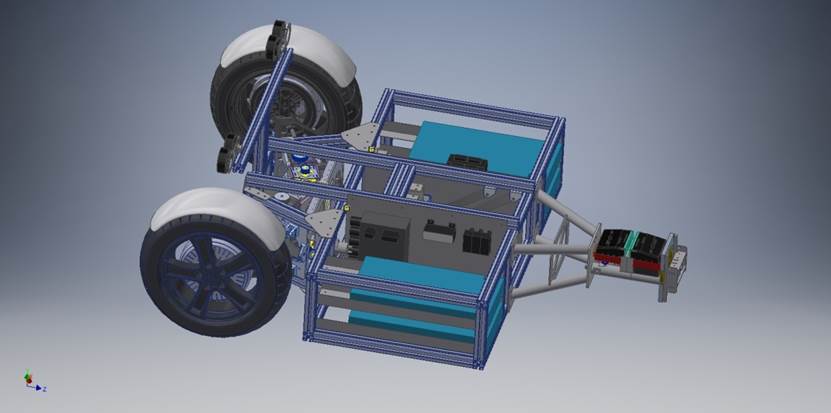SADA
Smart Adaptive Data Aggregation

The objective of the research project SADA is to develop technology that enables linking data from mobile on-board-sensors (on vehicles) with data from an unknown stationary sensor infrastructure in an intelligent and flexible way, independent from brand, manufacturer, or application area. SADA will enable the unrestricted dynamic integration and analysis of data from various heterogeneous sensors. In the future, this will be used for example to support driving comfort functions, to promote driving safety, and to contribute to environment protection by preventing traffic jams and searches for parking space.
| Duration: | 01.02.2015 till 30.04.2018 |
| Donee: | German Research Center for Artificial Intelligence GmbH |
| Sponsor: | Federal Ministry for Economic Affairs and Climate Action |
| Website: | http://www.projekt-sada.de/ |
| Partner: |
Siemens AG, fortiss GmbH, Baselabs GmbH, NXP, ALL4IP TECHNOLOGIES GmbH & Co. KG, Continental AG |
| Application Field: | Electric Mobility |
Project details
Modern cars are equipped with an increasing amount of on-board sensors. The expected market penetration of Advanced Driver Assistance Systems (ADAS), including autonomous driving, will turn future cars and trucks into moving measuring stations. In many cities, also traffic infrastructure is or is being equipped with sensors, gathering current information about traffic flow, traffic load, or parking space occupancy. A combined assessment of data from stationary infrastructure sensors and mobile sensors in cars may contribute to optimize the utilization of traffic infrastructure, reduce traffic jams and searches for parking space, and decrease the emission of CO2 and particulate matter. It can promote safety, and support comfort functions.
For electric vehicles in particular, this evolution creates many opportunities to raise the benefit and the acceptance of such vehicles. For example:
- Range prediction and driving style adjustment for optimized use of energy
- Autonomous driving of the "last stage", e.g. to get to the loading station
- Systematic degradation to increase the range
- Better environment perception for situational reaction, e.g. warning pedestrians through sound, avoiding unnecessary deceleration
- Organized operation of vehicles in fleets, e.g. car sharing, follower function in a platoon
However, the combination of data from mobile units and infrastructure is normally not put into practice today. There are no methods to use the many existing components in a modular fashion and to recombine them flexibly. One fundamental reason for this is that sensors and evaluation procedures, including necessary hardware and software, are developed independently and are not standardized. Therefore, sensors and data logging systems from different manufacturers and application areas cannot communicate with each other.
In the joint research project SADA, solutions are developed for a dynamic integration and processing of data derived from various, non-concerted sensors. The project will demonstrate how data collected by on-board sensors of a car may be combined intelligently and very flexibly with data from an unknown stationary sensor infrastructure. This shall lead to situational implementations of complex new application ideas.
Under the direction of SIEMENS AG, six partners from industry and research cooperate in the SADA joint research project.
As its demonstration platform, SADA uses the EO Smart Connecting Car 2 (EOscc2), a concept car developed by the DFKI RIC. EOscc2 is a highly flexible robotic electric vehicle with extended four wheel steering which allows driving sideways and diagonally as well as turning on the spot. The car is able to shrink by almost 80 cm in length. These capabilities facilitate parking in the city.
Through its modular design, EOscc2 may be extended by modules for additional functions, e.g. for storage or passengers. Within the SADA Project, this concept is implemented as a range extender, i.e. as a trailer with extra batteries.
Videos
SADA: Smart Adaptive Data Aggregation Szenario 1

The aim of the SADA joint project is to intelligently and flexibly link the data collected by the on-board sensors of an (electric) vehicle with the data of an unknown stationary infrastructure, regardless of manufacturer or application area. This enables the dynamic integration and evaluation of data from disparate and uncoordinated sensors. In the future, this should, for example, support comfort functions while driving, improve driving safety and protect the environment by avoiding traffic jams and parking lot search traffic.
EO smart connecting car: multipurpose extension module

The video presents the multi-purpose expansion unit for the robotic electric vehicle EO smart connecting car 2. With this vehicle, the researchers are pursuing a modular concept that allows for different modules to connect with each other, e.g. vehicle with vehicle or vehicle with trailer. Due to the new expansion unit - capable of acting as a trailer among others - the scientists have now been able to demonstrate the modularity of the EO smart connecting car 2 for the first time.



